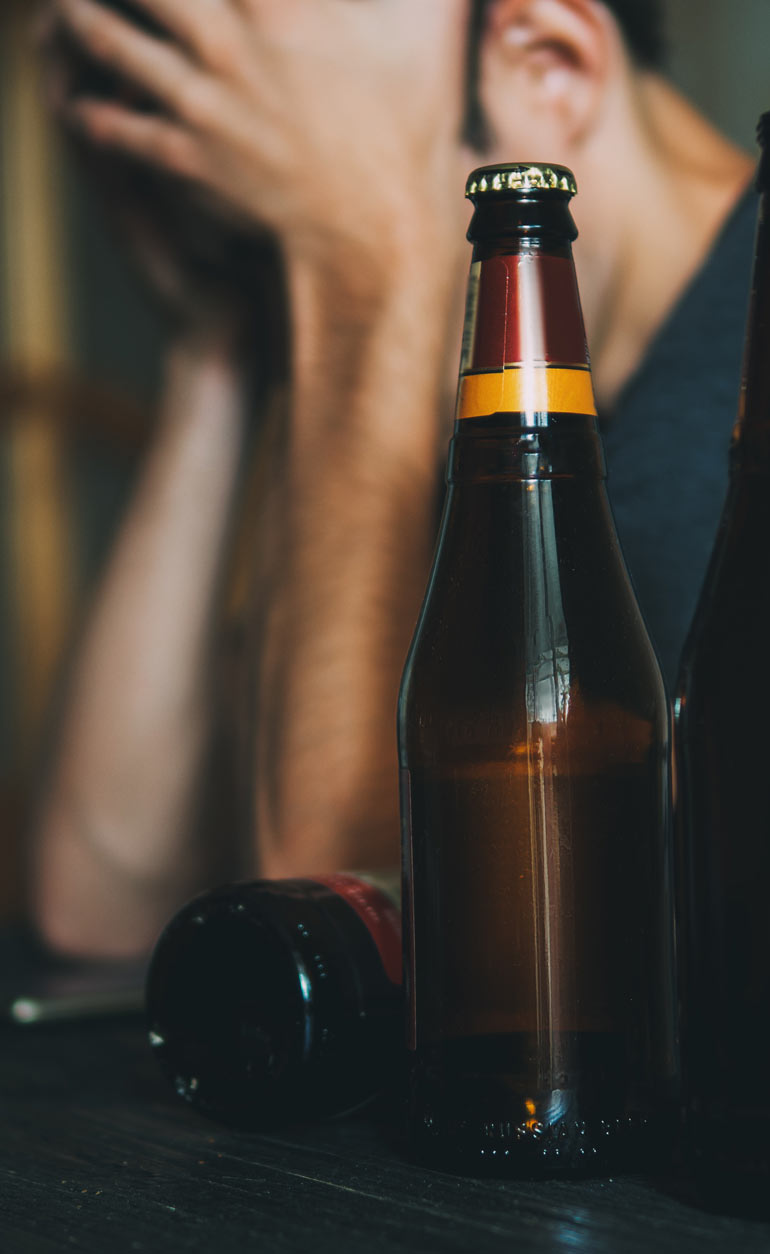Alcohol Addiction Treatment in Virginia
If your drinking has taken over your life, you don’t need to suffer in silence. Safe Harbor Recovery Center can provide the treatment you need to regain control and embrace the possibilities of a future free from addiction.
At Safe Harbor Recovery Center, alcohol addiction treatment is designed to help individuals achieve lasting sobriety by addressing both the physical and psychological aspects of addiction. The center offers a comprehensive range of services, including medically supervised detox, individual and group therapy, and relapse prevention strategies. Clients receive personalized treatment plans tailored to their specific needs, with a focus on healing the whole person. Therapeutic approaches include evidence-based methods such as cognitive-behavioral therapy (CBT), motivational interviewing, and holistic therapies like mindfulness and fitness programs. Family support and aftercare planning also play crucial roles in helping individuals maintain sobriety long after leaving treatment.
In addition to detox and therapy, Safe Harbor fosters a supportive, compassionate environment where individuals can rebuild their lives in a sober community. Clients are encouraged to engage in various activities, such as recreational outings and peer support groups, which promote positive relationships and healthier lifestyles. With a team of experienced addiction specialists, Safe Harbor provides the tools and resources needed for long-term recovery, offering hope and guidance to individuals struggling with alcohol dependence. The center’s dedication to personalized care ensures that each person receives the support they need to overcome addiction and embrace a future free from alcohol.
Our culture often casts substance abuse as a shameful and private personal matter, but alcohol addiction is much more common than you might expect. In a recent study, the National Institute on Alcohol Abuse and Alcoholism found that 2.5 percent of teenagers and 6.2 percent of adults suffer from alcohol use disorders.

Signs of Alcohol Addiction
It is important to understand that alcohol use disorders can affect people of all ages, races, genders, and socio-economic backgrounds. Someone with a family history of addiction is at a higher risk of developing an alcohol use disorder, but it’s quite possible for individuals with no history of substance abuse to become dependent upon alcohol.
Signs of alcohol addiction include:
- Planning your day around the consumption of alcohol or recovering from a period of drinking
- Needing to drinking large amounts of alcohol to experience the same level of intoxication
- Hiding your drinking from others or preferring to drink alone
- Avoiding activities that interfere with your drinking
- Being unable to successfully regulate your drinking on your own
- Experiencing nausea, sweating, shaking, and other withdrawal symptoms when you are unable to drink
An alcohol use disorder is typically characterized by problems with family, friends and work that are related to alcohol consumption. However, it is possible to suffer from an addiction and appear to be outwardly successful. These individuals are sometimes referred to as high functioning alcoholics. They hide their pain from their loved ones, but need help to free themselves from the burden of addiction.
Creating a Treatment Plan
Addiction is a biologically-based illness with complex environmental triggers. It’s not something a person can overcome with willpower alone. The road to recovery requires professional treatment tailored to your individual circumstances.
Treatment at Safe Harbor Recovery Center begins with an evaluation that looks at how our clinical team can best support your recovery. An initial evaluation will consider factors such as:
- How long you’ve been drinking
- Your current level of alcohol consumption
- Problems alcohol has caused with family, friends, or employers
- Your medical history
- Whether you’re experiencing mental health concerns, such as signs of anxiety or depression
- If you’ve relapsed in the past
- If you’re abusing drugs or other addictive substances in addition to alcohol
Ready to get started? Call (888) 932-2304 to speak confidentially with an admissions specialist or you may send us a message.

Our Evaluation Methods
Beginning with the initial evaluation, Safe Harbor Recovery Center clinicians use Trac 9 to track treatment readiness, cravings, relapse risk, and the risk of early treatment termination. This proprietary assessment tool has strong empirical support and is a feature unique to Safe Harbor Recovery Center and Summit Behavioral Health Care.
Residential Treatment
Residential treatment provides a structured environment for men and women in the early stages of recovery. Treatment includes intensive individual and group therapy to address the underlying issues contributing to the development of an alcohol use disorder. Guests also build the foundation for a sober lifestyle by learning to recognize triggers, manage cravings, socialize while sober, and find healthy ways to cope with stressful situations.
Continuing Care
Unfortunately, alcohol use disorder is classified as a chronic illness, meaning that recovery is an ongoing process. Even after completing residential treatment, individuals are not “cured” and must continue to engage in counseling, peer support, and other recovery efforts to build a stable, sober future.
Safe Harbor Recovery Center offers extensive transitional and aftercare services designed to support ongoing recovery and prevent relapse. These plans address vital aspects such as managing co-occurring mental health disorders, developing essential life skills, nurturing spiritual wellness, and securing ongoing support systems. Individuals are also guided in setting achievable short-term and long-term goals to facilitate a smooth transition back into independent living and maintain sobriety. This holistic approach ensures a well-rounded recovery experience, promoting wellness and sustainable change.
Contact Our Virginia Addiction Treatment Center
If you’re researching treatment options for yourself or a loved one, we’re happy to answer any questions you may have or schedule a tour of the Safe Harbor Recovery Center facility. Call today to speak with one of our admissions representatives.
